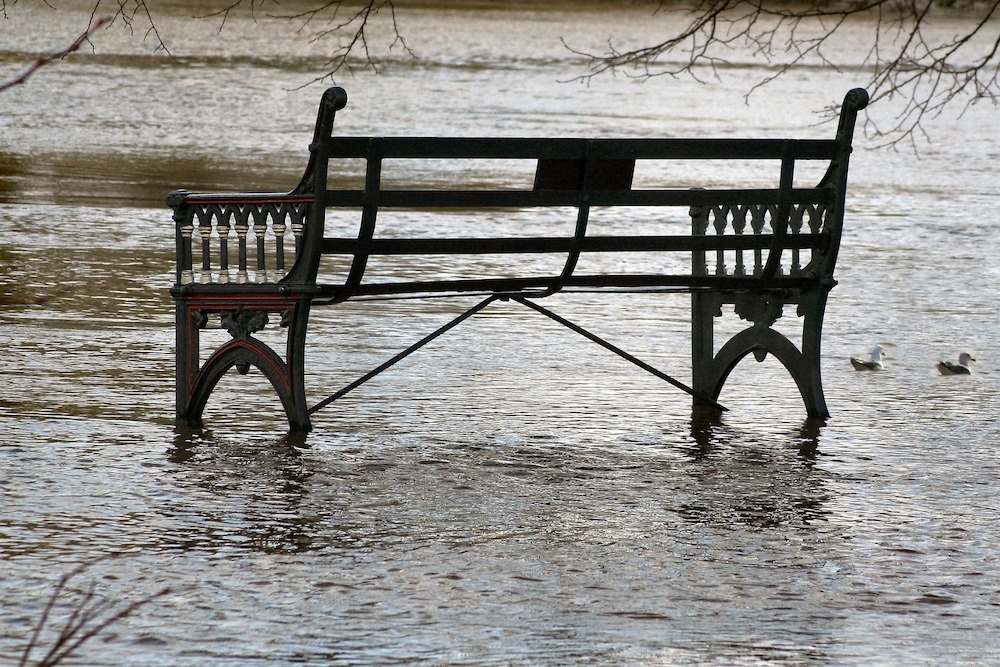Firn issued the following announcement on July 27.
The record July rainfall has washed millions of gallons of sewage and other pollution into the Chesapeake Bay, raising concerns of a setback in cleaning up the estuary. But environmentalists hope improvements in bay ecology will help waterways bounce back more quickly than they have from historic storms in the past.
It could take weeks to know how significant the blow might be.
“Anytime we have a big event like this, there’s a really heavy load, all at once, of pollution that comes in,” said Angela Haren, the Baltimore Harbor Waterkeeper. “It’s hard to tell how long it will take the ecosystem to balance itself.”
Baltimore public works officials said Friday that more than 10 million gallons of waste-contaminated water have overflowed from city sewers over the past week. That comes on top of sewage overflows already reported elsewhere in the region, including in Edgemere and Catonsville.
And as Conowingo Dam operators open nearly half its gates to manage high waters in the Susquehanna River and minimize flooding, officials are fearing what harm the outflow could bring to the Chesapeake.
“Unfortunately, this can cause pollution, sediment, and debris to spill into the Chesapeake Bay,” Gov. Larry Hogan wrote in a social media post, sharing a photo of a plume of pollution flowing into the bay after a past storm. Recent satellite imagery shows a similar picture this week.Haren said Blue Water Baltimore, the organization she works for, collected water samples Thursday and, as expected, found large amounts of floating trash and debris and areas of discolored water that indicate likely sewage pollution. Results of tests on those samples won’t be available until next week, but it’s safe to assume the report card won’t be good, she said.
The record rains, more than 15 inches so far this month at BWI Marshall Airport, come on top of other recent significant pollution events for the harbor. Last month, a plume of sediment appeared, washing from a construction site and clouding harbor waters. And before that, heavy rain in May and June washed in large amounts of sewage and trash.
“I think its been a tough summer for the harbor, but we tend to have a lot of rough summers,” Haren said.
The influx of sewage and pollution was prompting warnings for swimmers at public parks and beaches around the region because of unsafe levels of bacteria.
“All water activities are strongly advised against,” warned officials at Elk Neck State Park in Cecil County.
Anne Arundel County officials warned residents Thursday that swimming was off-limits at all public beaches because of likely elevated bacteria levels. The county restricts water access for 48 hours anytime half an inch or more of rain falls.Doug Myers, Maryland senior scientist for the Chesapeake Bay Foundation, said it will take a couple of weeks to learn of any significant setbacks to bay ecology. The Chesapeake has posted improving grades in recent years amid federal and multi-state cleanup efforts, but large storms and rain events can wash an influx of pollution into waterways, potentially slowing or reversing progress.
“We’ll see what the next couple weeks of weather does,” Myers said.
Another period of heavy rain is forecast next week, with the expected return of a weather pattern that sends a river of tropical moisture from the Bahamas and Caribbean into the Mid-Atlantic.
For now, Myers said, the good news is that the Susquehanna River flow only briefly reached an important benchmark — 400,000 cubic feet per second — Thursday night. At that level, water is moving forcefully enough to scour significant amounts of sediment and pollution that would otherwise remain trapped behind the dam, he said.
The Susquehanna is the source of half of the fresh water in the Chesapeake, and it also carries with it loads of pollution and farm runoff from across Pennsylvania and part of upstate New York.
Ecologists are hopeful that the plume of sediment coming into the bay’s main stem from the Susquehanna won’t be enough to smother underwater grasses that have blossomed to record levels this year. Similar rainfall during Tropical Storm Agnes in 1972 killed what little grass was growing at the river’s mouth, but scientists believe the vegetation is more resilient today.
A bigger concern will be whether an increased flow of nutrients such as nitrogen and phosphorus sparks a bloom of plankton and algae, which can lead to increased “dead zones” — areas of little or no oxygen at the bottom of the bay. Scientists had already predicted a larger-than-average dead zone by the end of this summer because of heavy spring rains, but that estimation did not account for the record July rainfall.
“Any predictions made before this event need to be thrown out as irrelevant,” Myers said. “It’s going to reset the clock as to what we can expect from dissolved oxygen levels.”
An influx of nutrients can reduce oxygen levels by spurring blooms of algae that strip oxygen from the water when they die and decompose.
Environmentalists said the surge in Susquehanna waters and fears of its impact underscore the importance of finding a long-term solution for preventing sediment and nutrients from passing through the Conowingo.
Earlier this year, the state ordered dam owner Exelon Corp. to find a way to limit the pollution from escaping reservoirs behind the dam, because they have filled to capacity. Exelon then sued the state, arguing it does not create the pollution and therefore cannot be required to reduce it.
“We will continue to push to ensure Exelon, the EPA, and upstream states do their part to decrease the pollution flowing into our state, and we continue to work on solutions to reduce the amount of sediment trapped behind the dam that continues to threaten the health of the Chesapeake Bay,” Hogan said in the social media post.
Original source can be found here.


 Alerts Sign-up
Alerts Sign-up